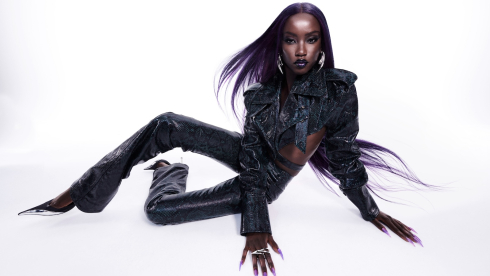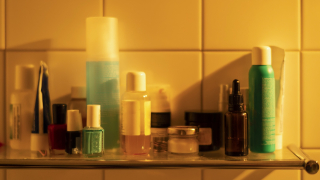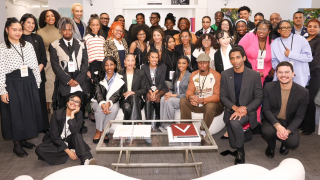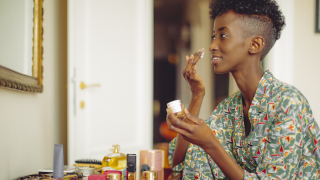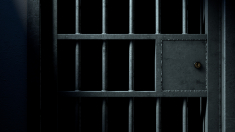Filmmakers Joe Brewster and Michele Stephenson have joined forces in producing a compelling documentary called American Promise chronicling their son, Idris and his friend Seun Summers journey through The Dalton School in New York City. It highlights the numerous perils Black children and families encounter in the United States educational system. Using their skills as a former human rights lawyer and psychiatrist respectively, they were able to examine some of the reasons that Black children are locked in such a battle between success and failure inside and outside American classrooms.
American Promise won the Special Jury Award at the Sundance Film Festival earlier this year and is generating notable Oscar consideration. The film will be seen on the PBS Series POV in 2014.
EBONY recently sat down with Brewster and Stephenson to delve into the making of their documentary and the challenges faced by Black children and their families in the American educational system.
EBONY: What led you to create this project and to continue it for 13 years?
Michele Stephenson: Well, we were filmmakers before we started this project and before our son, Idris entered The Dalton School. When we initially arrived at the school, we were looking at the promise that the school had made to us. They promised a more diverse environment; one that would reflect the diversity of New York City and a diverse education that would open doors and provide our son with numerous opportunities. This was a new environment that we found stimulating. We always loved the work of Michael Apted’s 7 Up series, which studied the social class dynamics in England. We were admirers of Hoop Dreams and its longitudinal filming approach and the work of Marlon Riggs in his documentary Black is… Black Ain’t.
The initial goal was to document this diversity experiment that the school was embarking on and we became a part of it. It included not just the two boys, but three girls from the same kindergarten class from different ethnic and socioeconomic backgrounds. This documentary was going to be the chronicling of these different students and families in this diversity experiment. But what ended up happening along the way was we found out as documentary filmmakers you have to be flexible with your stories, especially, if you’re doing observational work or direct cinema work. The girls ended up dropping out of the project when they were in the third grade. The parents decided it was going to be a long journey and the girls were starting to get self-conscious. So — we were left with these two boys and two families from Brooklyn. At the same time, we were experiencing the particularities that young black men face not just in an educational environment, but on a societal level. And as parents we were grappling with those issues on a day to day basis.
EBONY: How did you come up with the title American Promise?
Joe Brewster: It took us a long time to come up with this title. For a long time, the title was The Dalton Experiment. Half way through the documentary we changed the name of it. I’m not sure what the initial impetus was, but what was clear to us over time, is there were a few double entendres with the title. It was about the promise that we expand the expectations that we have and part of it speaks to the unrealistic nature of those promises given the kind of obstacles African-Americans encounter on a daily basis. But we were optimistic about the ability to succeed in an environment where some of these obstacles existed so we could confront them and help our son.
When you think of the word "American," an African-American boy may not come to mind. We wanted to make it very clear that we own the piece of the rock. How often do you see middle-class African-American boys on a movie screen? It’s almost non-existent. When you think of African-Americans on screen, most tend to think of the black underclass. It’s a perception formed by the media. We bring to life a different kind of struggle; an African-American two class struggle. It’s not that one is preferred over the other, but the reality is, we make up this American mosaic and Blacks are not a monolith.
EBONY: One thing that stood out in the film was the openness that your family and the Summers family showed. As you were filming, how did you want to showcase to the multifaceted struggles Black families go through in trying to give their children access to a better education and resources in this nation?
JB: What we discovered early on is when we sought help from the African-American families with boys in the school; they were reluctant to share their feelings. We saw those families being asked to leave one by one. Looking back now to ask them to share their feelings under that type of stress, shame, anxiety, and fears would’ve been a bit much. But we were not dissuaded from speaking to these families outside of that environment. We consulted a number of experts. One of them was a mentor of mine from medical school named Dr. Alvin Poussaint. What he shared with us was that many families were going through the same things. It wasn’t happening only in New York or the East Coast. He said the issue was deeper than us. A new crop of boys came into the school and their parents were eager to share their experiences. As a result, the sharing of information helped those boys thrive in that environment.
EBONY: What were you able to learn in your experience with your son, Idris and Seun during the making of this film?
MS: There were a couple of things we were able to learn. We soon realized through our son’s experience that white male students were taking medication. They were diagnosed with ADHD and this was a large number of the male student population. Parents immediately resorted to solving the issue with medication. But the other thing I realized is that educators and institutions need to be more informed about the racial implications of their attitudes in advising and diagnosing our boys. It’s not that we want to reject the diagnosis, but a lot of it is how you say it to us and what your assumptions are. As a result, they place a child in special education classes. Many times our boys are put in special education classes after being diagnosed while white male students are not. When we have these conversations with teachers, institutions, and educators, they need to be better informed and much more culturally responsive in coming up with a solution.
Chris Williams is an internationally published writer. You can follow him on Twitter @CWmsWrites.





